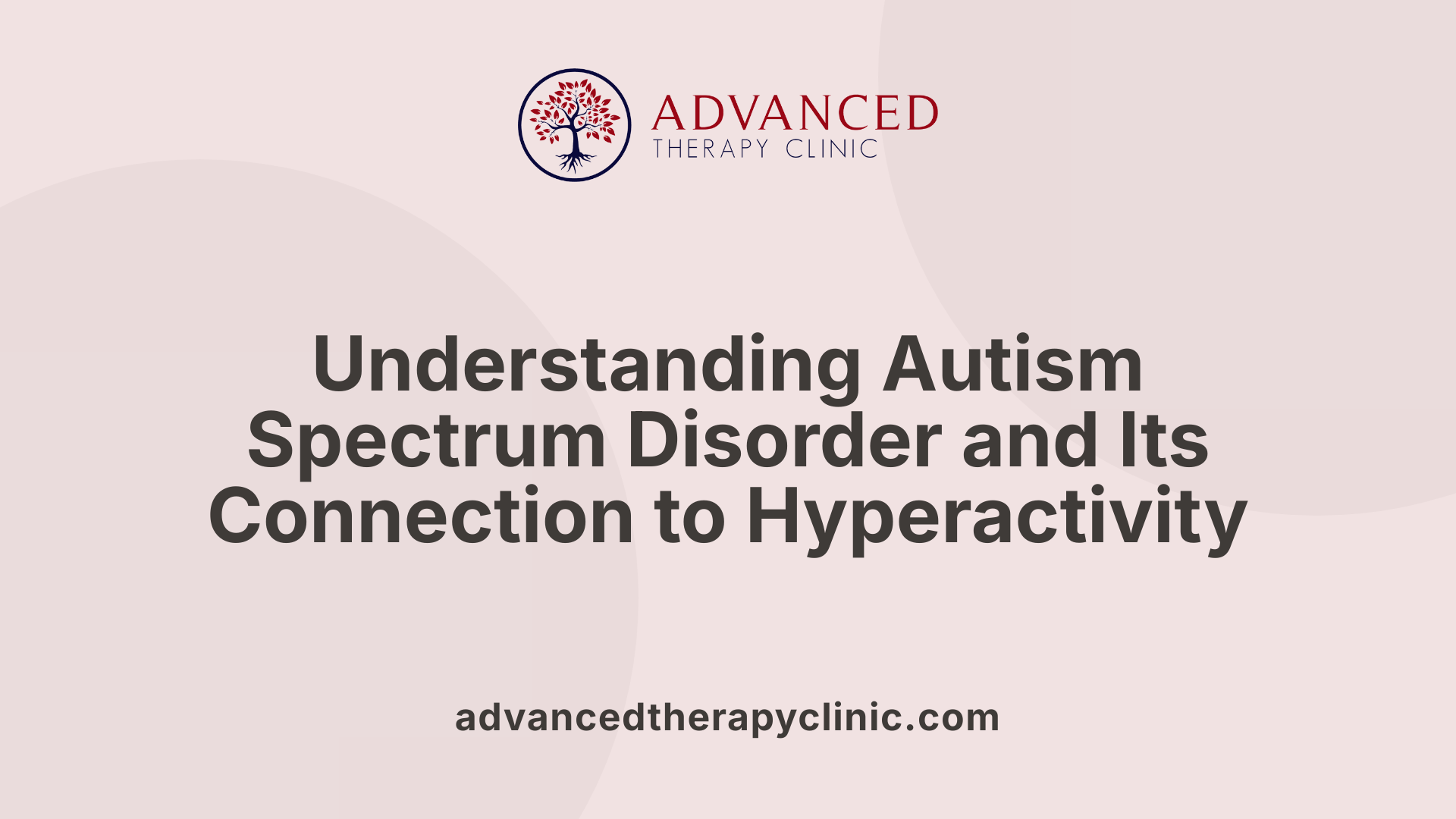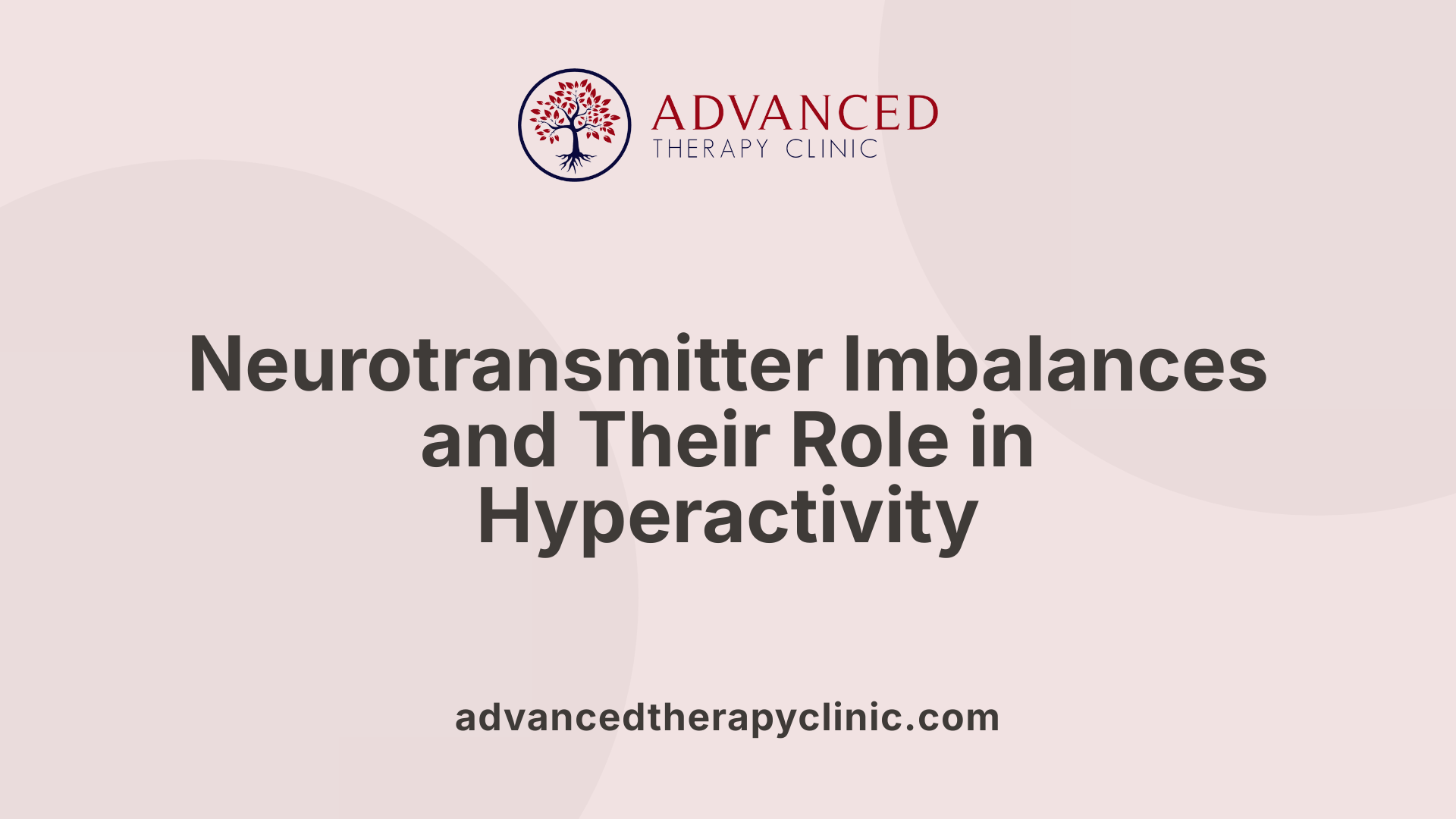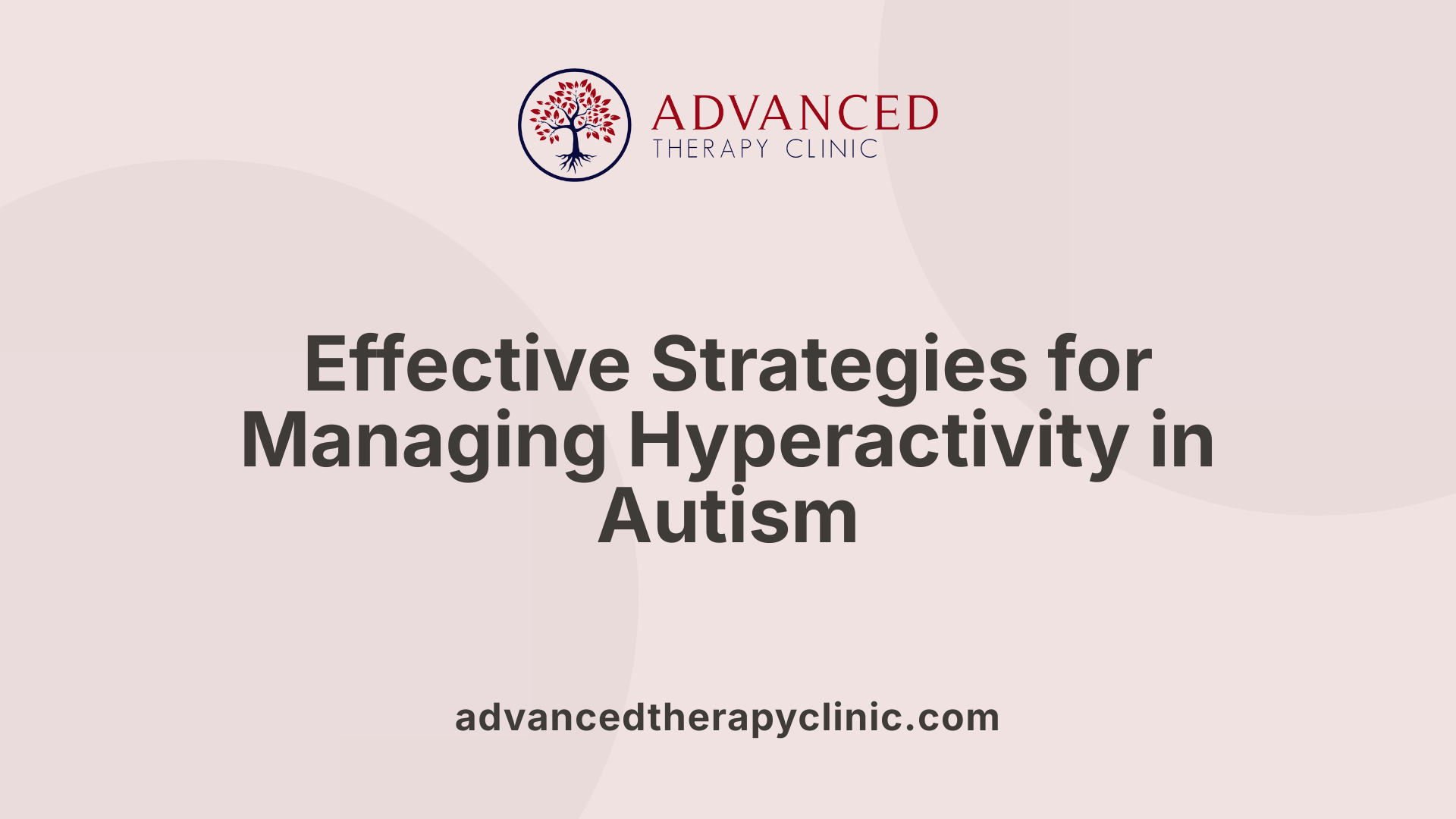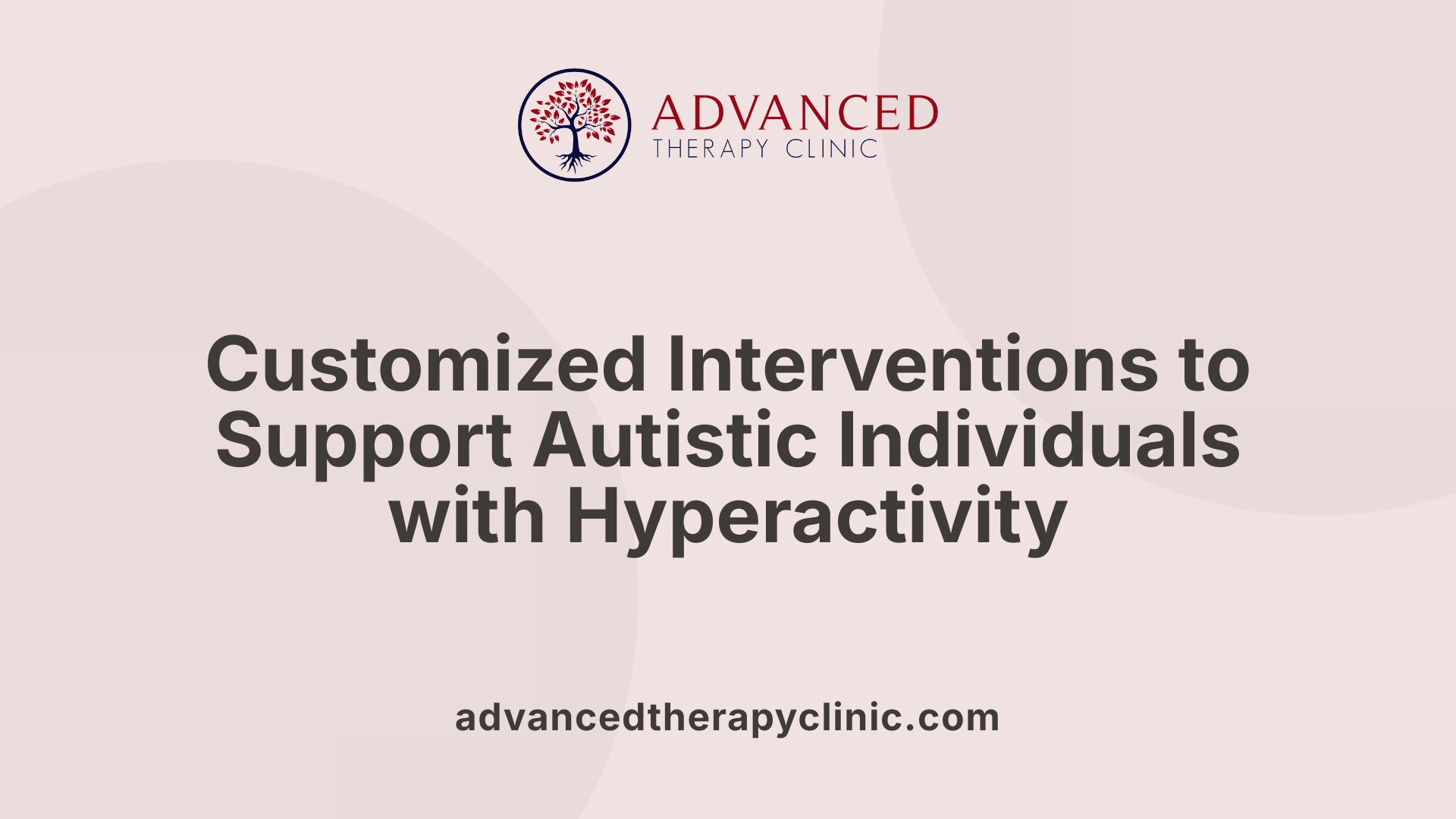Does Autism Cause Hyperactivity


Understanding the Complex Relationship Between Autism and Hyperactivity
The question of whether autism causes hyperactivity is a common concern among caregivers, educators, and healthcare providers. While autism spectrum disorder (ASD) and hyperactivity are distinct conditions, they often intersect, complicating diagnosis and management. This article explores the nature of hyperactivity in autistic individuals, the relationship between autism and attention deficit hyperactivity disorder (ADHD), and the underlying neurobiological and genetic factors involved. By examining symptoms, causes, and treatment options, readers will gain a comprehensive understanding of how these conditions relate and how to support affected individuals effectively.
Defining Autism Spectrum Disorder and Hyperactivity

What is autism spectrum disorder?
Autism Spectrum Disorder (ASD) is a neurodevelopmental condition characterized by differences in brain functioning that affect communication, social interaction, and behavior. It is considered a spectrum, meaning its traits and severity can vary widely among individuals. Common signs include difficulties in socializing, communication challenges, and restrictive or repetitive behaviors such as repeated phrases, hand-flapping, and intense interests. Autism spectrum disorder results from complex interactions of genetic and environmental factors, with no single known cause. Diagnosis involves assessments like the Autism Diagnostic Observation Schedule (ADOS) and requires personalized support tailored to individual needs.
What is hyperactivity?
Hyperactivity refers to abnormally high levels of activity, often accompanied by difficulty in attention regulation. It manifests as restless behaviors, impulsiveness, and an inability to stay still or focus for extended periods. Hyperactivity is not exclusive to any one condition but is notably prevalent among children with autism and ADHD. It is characterized by behaviors such as excessive talking, fidgeting, jumping, climbing, and persistent movement. These behaviors can interfere with learning, socialization, and daily functioning, particularly when they are persistent and intense.
How is hyperactivity characterized in children?
In children, hyperactivity often shows early, sometimes as early as 2 years old. Common signs include constant movement, difficulty focusing on tasks, impulsive actions, and restlessness. Children with hyperactivity may struggle with activities that require sustained attention, such as doing homework or sitting through conversations. They might also display behaviors like excessive running, jumping, and fidgeting, along with talking excessively or interrupting conversations.
Hyperactive children often exhibit behaviors that are impulsive or restless to an unusual degree compared to their peers. In children with autism, hyperactivity can be intertwined with sensory processing needs and challenges in motor control and regulation. Such behaviors may stem from underlying neurobiological factors, including neurotransmitter imbalances like low dopamine and norepinephrine levels, which are involved in reward and attention mechanisms.
While hyperactivity is commonly observed in children with ADHD, it is also a frequent comorbid symptom in children with ASD. Studies suggest that between 30% and 50% of children with autism display signs of ADHD, making hyperactivity a significant concern that requires individualized and often multifaceted management strategies. Effective interventions often include behavioral therapies, pharmacological treatments, and environmental modifications to help children develop better impulse control and attention regulation.
Does autism cause hyperactivity?
Autism Spectrum Disorder (ASD) and hyperactivity are related but distinct conditions, with hyperactivity being a common symptom observed in many autistic individuals. Research shows a significant overlap between autism and ADHD, with estimates indicating that approximately 30 to 50% of children with ASD also exhibit ADHD symptoms, especially hyperactivity. Both disorders share genetic factors and can co-occur, termed AuDHD, leading to more complex behavioral challenges such as impulsivity and excessive mobility. While autism itself does not directly cause hyperactivity, many autistic individuals display hyperactive behaviors due to underlying neurodevelopmental factors like dopamine dysregulation. Effective management often requires personalized treatment approaches because hyperactivity frequently persists and impacts daily functioning in autistic individuals.
Prevalence and Early Signs of Hyperactivity in Autism

How early can hyperactivity be observed in autistic children?
Hyperactivity can be evident in children with autism as early as 2 years old. Parents and caregivers might notice signs such as constant movement, difficulty sitting still, excessive talking, or repetitive behaviors even at this young age. These behaviors are often linked to underlying neurological factors influencing activity levels and attention regulation. Early identification of hyperactivity is important because it can impact social interactions and learning processes during critical developmental stages.
Early signs may include impulsivity, fidgeting, and a propensity for vigorous physical activity or difficulty calming down after engaging in play. Because these behaviors coincide with typical developmental milestones, they can sometimes be overlooked or attributed to normal childhood energetic phases. However, persistent hyperactivity that interferes with daily functioning warrants professional evaluation for related conditions such as ASD or ADHD.
What are the prevalence rates of hyperactivity among autistic children?
Research indicates that hyperactivity is a very common feature in children with autism. It often co-occurs with autism spectrum disorder (ASD) as a behavioral symptom or as part of coexisting conditions like Attention Deficit Hyperactivity Disorder (ADHD). Studies show that between 30% and 50% of children with ASD display signs of hyperactivity.
The high prevalence suggests that hyperactivity is not just an occasional behavior but a significant pattern observed in many autistic children. For example, Autism Speaks reports that approximately 35.3% of autistic children aged 1-17 who are on Medicaid exhibit co-occurring ADHD, which involves hyperactivity and impulsivity.
This overlap underlines the importance of early screening and intervention strategies to manage hyperactive behaviors effectively. Recognizing these signs early can help tailor supportive therapies that address both behavioral regulation and social development.
Does autism cause hyperactivity?
While autism itself does not directly cause hyperactivity, it is very common for children with ASD to exhibit hyperactive behaviors. These behaviors include impulsiveness, restlessness, and repetitive movements, which are often observed in autistic children from the age of two.
The underlying causes of hyperactivity in children with autism are thought to involve genetic and neurobiological factors that affect neurotransmitter production and regulation, especially dopamine and norepinephrine. Research suggests that lower levels of these neurotransmitters—critical for attention, reward processing, and impulse control—contribute significantly to hyperactivity symptoms.
Additionally, hereditary factors may lead to functional issues in the frontal lobe of the brain, which is essential for regulating impulses and executive functions. Sensory processing challenges and the need for motor control can further exacerbate hyperactive behaviors in autistic children.
In summary, hyperactivity is a common feature observed in many children with autism, rooted in complex neurological and genetic interactions rather than a direct result of autism per se.
Neurological and Genetic Foundations of Hyperactivity in Autism
What is the relationship and difference between autism and hyperactivity?
Autism Spectrum Disorder (ASD) and hyperactivity are distinct neurodevelopmental conditions that often intersect, but they are not the same. Autism primarily involves difficulties in social interaction, communication challenges, and repetitive behaviors. Hyperactivity, often associated with Attention Deficit Hyperactivity Disorder (ADHD), is characterized by excessive movement, impulsiveness, and trouble focusing.
Research indicates that a large proportion of children with autism—between 50% and 70%—also display signs of hyperactivity. Despite this overlap, their core features differ. Children with ADHD tend to seek new experiences impulsively and may act without much forethought. In contrast, autistic children often crave routines, show repetitive behaviors, and may be more sensitive to sensory stimuli.
Both conditions share some neurobiological ties, such as differences in brain structure and genetic influences. These shared factors contribute to overlapping symptoms like sensory processing differences, executive functioning deficits, and social challenges.
Understanding the distinctions and relationships between autism and hyperactivity is essential for tailored diagnosis and treatment. Support strategies often involve behavioral therapies, medication, or combined approaches that address individual symptoms.
Overall, recognizing both their unique traits and commonalities facilitates more effective interventions, helping affected individuals lead more balanced lives.
Role of neurotransmitters like dopamine and norepinephrine
Neurotransmitters play a central role in regulating behaviors associated with hyperactivity. In children with autism, studies have shown that hyperactivity can largely result from abnormalities in dopamine and norepinephrine levels.
Dopamine, known for its involvement in reward and motivation, appears to be deficient in many individuals with hyperactivity. Lower dopamine secretion affects the brain's ability to regulate attention, impulse control, and motor activity.
Similarly, norepinephrine influences alertness and arousal. Reduced levels of these neurotransmitters disrupt normal neural signaling, leading to symptoms such as restlessness, impulsivity, and difficulties maintaining attention.
Pharmacological treatments often aim to optimize these chemical levels. For example, stimulant medications like methylphenidate increase dopamine and norepinephrine availability, helping to improve focus and reduce hyperactive behaviors. However, children with autism may respond differently to these medications, sometimes experiencing more side effects, necessitating careful management.
Understanding the role of these neurotransmitters informs both pharmacological and behavioral strategies to better handle hyperactivity symptoms.
Genetic factors influencing hyperactivity and autism
Genetics significantly contribute to the development of both autism and hyperactivity. Many studies point to a substantial hereditary overlap, indicating that common genetic variants influence neurodevelopmental pathways involved in these conditions.
Genes affecting neurotransmitter production, regulation, and receptor functioning are particularly important. Variations in genes related to dopamine and norepinephrine pathways can predispose individuals to hyperactivity and other related behaviors.
Hereditary influences also impact brain structure and connectivity, especially in regions responsible for executive functions, such as the frontal lobe. These genetic factors can lead to functional differences that manifest as impulsivity, inattention, and motor hyperactivity.
Research into genetic markers continues to evolve, with the goal of developing targeted interventions. Identifying genetic influences helps deepen understanding of why hyperactivity occurs in autism and offers pathways for personalized treatment.
Brain regions involved in hyperactivity, such as the frontal lobe
The frontal lobe plays a vital role in regulating behavior, decision-making, impulse control, and motor activity. Many of the difficulties seen in hyperactive children with autism are linked to functional problems within this brain region.
Hereditary factors may cause atypical development or functioning of the frontal lobe, impairing its ability to effectively manage impulses and attention regulation.
Imaging studies suggest that individuals with hyperactivity often exhibit decreased activity and connectivity in the frontal lobe, which is responsible for executive functions. This underactivity can result in impulsive behaviors, restlessness, and an inability to focus.
Additional brain areas involved include the basal ganglia, which are important for movement regulation, and the limbic system, involved in emotional regulation. Abnormalities across these regions contribute to the complexity of hyperactivity symptoms.
Understanding the neural substrates aids in developing targeted therapies, whether behavioral or pharmacological, aiming to enhance frontal lobe function and improve self-regulation in children with autism experiencing hyperactivity.
| Neurobiological Aspect | Key Features | Impact on Behavior | Relevant Brain Regions |
|---|---|---|---|
| Neurotransmitter Levels | Low dopamine and norepinephrine | Impulsivity, inattention, hyperactivity | Brainstem, frontal lobe |
| Genetic Factors | Variations affecting neural pathways | Predisposition to hyperactivity and autism | Whole brain, especially frontal lobe |
| Brain Structures | Underdeveloped or less active frontal lobe | Poor impulse control, difficulty focusing | Frontal lobes, basal ganglia |
Understanding these interconnected biological factors enhances the ability to tailor treatments and support strategies for children affected by hyperactivity in autism, improving their overall developmental trajectory.
How Neurotransmitter Imbalances Contribute to Hyperactivity in Autism

What are the symptoms, causes, and management options for hyperactivity in autistic individuals?
Hyperactivity in children and adults with autism spectrum disorder (ASD) often presents as constant movement, impulsive actions, and difficulty staying still. Children may exhibit behaviors like hand-flapping, rocking, excessive talking, or running around uncontrollably. These behaviors can be driven by sensory needs and a desire to regulate motor control.
The underlying causes of hyperactivity in autism are complex. Neurological differences, particularly in brain structures such as the basal ganglia and frontal lobes, play a significant role. Additionally, genetic factors influence how neurotransmitters are produced and regulated, affecting behavioral responses.
Among the key neurobiological contributors are imbalances in neurotransmitters—chemical messengers in the brain that regulate mood, attention, and movement. Disruptions in these chemicals can lead to the hyperactive behaviors often seen in autistic individuals.
Management of hyperactivity typically involves a combination of strategies. Behavioral therapies aim to improve self-control and reduce impulsivity. Environmental modifications, like structured routines and sensory-friendly settings, can help minimize triggers.
When necessary, medications such as stimulants (e.g., methylphenidate) or antipsychotics may be prescribed, although their effectiveness varies and they may cause side effects. Multidisciplinary approaches customized to each individual's needs tend to produce the best outcomes.
Effective management hinges on comprehensive assessments to distinguish hyperactivity related to sensory needs, motor regulation, or co-occurring conditions like ADHD. This tailored approach helps improve daily functioning and enhances quality of life.
How do neurotransmitter imbalances lead to hyperactive behaviors?
Neurotransmitters are vital for normal brain function, especially in regulating attention, movement, and impulses. In autistic individuals, disturbances in these chemicals can alter neural communication pathways.
Dopamine deficiency and its effects
Dopamine is crucial for reward, motivation, and motor control. Reduced dopamine secretion can diminish feelings of pleasure and motivation, leading to increased impulsivity and hyperactivity. Studies show that lower dopamine levels in the brain’s pathways are associated with difficulty in controlling movement and attention.
This deficiency can result from genetic factors that affect dopamine synthesis or receptor functioning. Structural differences in the brain's basal ganglia, which rely on dopamine for smooth motor regulation, also contribute.
Role of norepinephrine in attention and impulse control
Norepinephrine, another neurotransmitter involved in alertness and stress response, also influences attention regulation and impulse control. Lower levels can impair the brain’s ability to focus and inhibit inappropriate behaviors, further contributing to hyperactivity.
In children with autism, impaired regulation of norepinephrine often correlates with challenges in sustaining attention and managing impulses. Together, dopamine and norepinephrine imbalances promote a cycle of restlessness and impulsivity.
Impact of neurotransmitter regulation on hyperactive behaviors
Proper regulation of neurotransmitters is essential for normal behavioral control. Dysregulation can lead to persistent hyperactivity, difficulty in attention regulation, and impulsive responses.
Research indicates that neurochemical imbalances are not just symptoms but may be foundational causes of hyperactivity within autism. Understanding these mechanisms has driven the development of targeted pharmacological interventions aimed at correcting neurotransmitter levels.
However, treatments must be carefully tailored. For instance, stimulants that increase dopamine levels are effective for some but can exacerbate behavioral issues in others or cause adverse side effects, especially when combined with sensory sensitivities common in autism.
In summary, the imbalance of neurotransmitters like dopamine and norepinephrine plays a central role in hyperactivity in autistic individuals. Their regulation influences motor activity, attention, and impulsivity, making them critical targets for treatment and management strategies.
| Neurotransmitter | Role in Behavior | Impact of Imbalance | Common Associated Behaviors | Treatment Approaches |
|---|---|---|---|---|
| Dopamine | Reward, motivation, motor control | Low levels lead to impulsivity, lack of motivation | Restlessness, hyperactivity, impulsivity | Stimulant medications, behavioral therapies |
| Norepinephrine | Attention, alertness, stress response | Deficiency causes inattention and impulsivity | Distractibility, difficulty focusing | Medication adjustments, behavioral interventions |
| Serotonin | Mood regulation, social behavior | Imbalance may relate to anxiety, repetitive behaviors | Anxiety, mood swings | Selective serotonin reuptake inhibitors (SSRIs), therapy |
Understanding the neurochemical basis of hyperactivity helps in creating effective treatment plans for individuals with autism. It underscores the importance of comprehensive assessments and personalized interventions that address underlying biological factors.
The Co-occurrence of Autism and ADHD: A Closer Look
What is the prevalence of ADHD in autistic individuals?
Autism spectrum disorder (ASD) and attention deficit hyperactivity disorder (ADHD) often appear together, making co-occurrence quite common. Research shows that between 50% and 70% of children with ASD also exhibit symptoms of ADHD. According to Autism Speaks, approximately 35.3% of autistic children aged 1-17 and 21.1% of autistic adults aged 18-64 on Medicaid have co-occurring ADHD. This high prevalence highlights the frequent overlap between these two neurodevelopmental conditions.
In addition to children, many adults with autism also experience ADHD symptoms, demonstrating that the overlap extends across different age groups. The presence of both disorders can complicate diagnosis and management, requiring careful assessment to distinguish and address each condition effectively.
How do autism and ADHD overlap or relate?
Autism and ADHD share several neuropsychological features, including problems with executive functions such as decision-making, impulse control, and social skills. Both conditions involve difficulties with attention regulation, impulsivity, and sensory sensitivities.
Genetically, autism and ADHD have a substantial overlap, with common familial influences suggesting shared genetic factors. Heritability estimates point to similar genetic markers influencing both conditions, reinforcing the idea of a shared biological basis.
Neuroimaging studies further support their connection by revealing common abnormalities in brain structure and connectivity. These neurobiological overlaps contribute to their overlapping behavioral traits, such as sensory processing differences and social challenges.
Children with both autism and ADHD often display overlapping symptoms like hyperfocus or overfocus, repetitive behaviors, and impulsivity, which can make accurate diagnosis challenging. Their traits might include intense interests, sensory sensitivities, hyperactivity, and executive dysfunction.
The term AuDHD has emerged to describe individuals experiencing traits of both disorders, illustrating how intertwined these conditions are in their manifestation.
What are the shared neuropsychological features?
Shared features include:
- Executive dysfunction affecting decision-making and impulse control
- Sensory processing issues, such as hypersensitivity or hyposensitivity
- Social interaction challenges, including difficulties understanding social cues
- Attention regulation problems, leading to distractibility or hyperfocus
- Repetitive behaviors and intense interests, although the nature of these interests may differ
Researchers also note that both disorders involve similar brain activity patterns, with neurobiological research showing overlaps in neural connectivity and structure abnormalities.
How does genetic overlap influence familial and individual risks?
Genetic studies reveal significant influences from shared familial factors. Specific genes linked to neurodevelopmental processes appear to increase the likelihood of developing both ASD and ADHD.
Family histories often show that relatives may carry traits associated with one or both conditions, indicating a hereditary component. This genetic overlap explains why both disorders frequently run in families and why they often coexist in individuals.
Understanding these genetic links helps in risk assessment and guiding early intervention efforts, potentially improving outcomes for children with genetic predispositions.
What are the implications for diagnosis and treatment?
Diagnosing individuals with both autism and ADHD requires comprehensive assessments that consider overlapping symptoms. Traditional diagnostic tools are evolving, with updated criteria recognizing the frequent co-occurrence.
Effective treatment involves a combination of behavioral therapies, educational support, and medications tailored to each individual's needs. Stimulating medications used for ADHD, like methylphenidate, may be less effective or cause side effects in children with ASD, necessitating cautious use.
Behavioral interventions might need modification to address sensory sensitivities and social deficits common in ASD while managing impulsivity and hyperactivity associated with ADHD.
Overall, multidisciplinary approaches that include medical, psychological, and educational strategies are essential for improving functioning and quality of life.
| Aspect | Details | Additional Notes |
|---|---|---|
| Prevalence | 50-70% of children with ASD have ADHD symptoms | High co-occurrence rate |
| Shared Features | Executive dysfunction, sensory issues, social challenges | Neurobiological overlap |
| Genetic Overlap | Common familial influences, shared genes | Heritability estimates support link |
| Treatment Approaches | Behavioral therapy, medications, tailored interventions | Must address both sets of symptoms |
Understanding how autism and ADHD interrelate helps families, clinicians, and researchers develop better diagnostic tools and more effective, personalized management strategies. Ongoing research continues to elucidate their shared pathways, ultimately aiming to support individuals with dual diagnoses more effectively.
Assessment and Management of Hyperactivity in Autistic Individuals

What is autism spectrum disorder and does it include issues like hyperactivity?
Autism Spectrum Disorder (ASD) is a neurodevelopmental condition that impacts how a child’s brain processes social interactions, communication, and behavior. Individuals with ASD often display challenges such as difficulties in socialization, communication, and the presence of restricted or repetitive behaviors. These can include repetitive movements, intense interests, or sensitivities to textures and sounds.
While hyperactivity is not one of the core diagnostic features of ASD, it frequently appears as a co-occurring issue. Many children with autism also show symptoms of Attention-Deficit/Hyperactivity Disorder (ADHD), including impulsivity, restlessness, and excessive activity. Research indicates that more than half of those with ASD exhibit signs of ADHD, making hyperactivity a common supplementary concern.
This overlap is rooted in shared neurobiological factors, including similar brain structure abnormalities and genetic influences. For some autistic children, hyperactivity is linked to sensory processing issues or the need to establish motor control and regulation. In cases where ADHD coexists with ASD, treatments such as stimulant medications may help, although their effectiveness can be limited.
Overall, hyperactivity occurs in a significant subset of individuals with autism, particularly when ADHD features are present. It is important to recognize that while not a defining feature of ASD, hyperactivity can influence an individual’s behavior and require tailored management strategies.
The Importance of Tailored Interventions and Support Strategies

What are the symptoms, causes, and management options for hyperactivity in autistic individuals?
Hyperactivity is a common trait observed in children and adults with autism spectrum disorder (ASD). It typically manifests as an unusually high level of activity, restlessness, and difficulty controlling impulses. Children might display behaviors including constant talking, fidgeting, jumping, climbing, or repetitive movements like hand flapping and rocking. These behaviors can be accompanied by impulsivity and sensory-driven actions, often overwhelming their ability to focus or stay still.
These symptoms are not uniform across all autistic individuals but vary widely depending on their neurological and environmental factors. The underlying causes of hyperactivity in autism are complex and multifaceted. Neurobiological differences play a significant role, especially abnormalities in brain structures such as the basal ganglia, which are involved in motor control and behavior regulation. Neurotransmitter imbalances are also prominent; notably, low levels of dopamine and norepinephrine—chemicals vital for reward processing and attention regulation—are linked to hyperactivity.
Genetic factors further contribute to hyperactivity’s development. Studies suggest that hereditary influences can affect neurotransmitter production and regulation, leading to functional problems in brain areas like the frontal lobe, which is essential for impulse control and executive functioning. Sensory sensitivities and the need to establish motor control often exacerbate hyperactive behaviors, especially when sensory inputs are overwhelming or when routines are disrupted.
Managing hyperactivity in autistic individuals involves a multi-pronged approach tailored to the person’s specific needs. Behavioral therapies, such as applied behavior analysis (ABA), help improve self-regulation and develop adaptive skills. Environmental modifications—like creating calm, predictable settings and using sensory-friendly tools—can significantly reduce hyperactive triggers.
Medication can also play a role, especially in severe cases or when hyperactivity interferes with learning or social functioning. Stimulants such as methylphenidate and amphetamines are commonly used but may be less effective or cause more side effects in autistic individuals. Alternative options include non-stimulant medications and antipsychotics, prescribed with caution and under medical supervision.
Comprehensive assessment is vital to understand the underlying causes of hyperactivity and to differentiate it from other conditions like ADHD or anxiety. This ensures that interventions are personalized, whether behavioral, environmental, or pharmacological. The ultimate goal is to improve daily functioning, facilitate social integration, and enhance quality of life for autistic individuals.
How do tailored interventions improve daily functioning?
Implementing individualized strategies can make a significant difference. For instance, incorporating sensory integration techniques can address sensory sensitivities that often drive hyperactivity. Structured routines and visual schedules help autistic children manage expectations and reduce anxiety.
Social and communication support, including social skills training and speech therapy, can ease social deficits that complicate hyperactivity management. Such interventions foster better peer interactions and decrease frustrations that may trigger hyperactive behaviors.
Occupational therapy assists in developing motor skills and self-regulation strategies, directly targeting hyperactivity and impulsivity. Combining these therapies with parent and caregiver training ensures consistency and reinforces positive behaviors.
In summary, understanding the unique profile of each autistic individual is crucial. Interventions that combine behavioral approaches, environmental adjustments, medication when necessary, and ongoing support are most effective in managing hyperactivity and promoting thriving in daily life.
Strategies for improving social and daily functioning
| Strategy | Description | Expected Outcome |
|---|---|---|
| Behavioral Therapy | Focuses on modifying challenging behaviors through reinforcement strategies | Improved self-control and reduction in hyperactivity behaviors |
| Sensory-Friendly Environments | Creating spaces that reduce sensory overload, like dim lighting or noise-canceling tools | Less sensory-driven agitation and improved comfort |
| Visual Schedules and Routines | Using charts and visual aids to establish predictable daily patterns | Reduced anxiety and better behavior regulation |
| Social Skills Training | Teaching children appropriate social interactions in structured settings | Enhanced peer interactions and social competence |
| Occupational Therapy | Developing motor skills and self-regulation tactics | Better impulse control and motor coordination |
| Medication Management | Using appropriate medications under supervision to manage hyperactivity | Symptom reduction and improved attention |
| Family and Caregiver Support | Training and counseling to implement strategies consistently | Stable environment and reinforced positive behaviors |
By combining these approaches, caregivers, educators, and healthcare providers can create supportive frameworks that help autistic individuals navigate daily challenges more effectively. Tailoring interventions to the individual’s specific needs ensures the most meaningful improvement in their social skills, behavior regulation, and overall quality of life.
Key Takeaways and Future Directions in Autism and Hyperactivity Research
While autism does not directly cause hyperactivity, the relationship between the two involves shared neurobiological, genetic, and behavioral factors. Many autistic individuals exhibit hyperactive behaviors due to underlying neurological differences, neurotransmitter imbalances, and sensory needs. High co-occurrence rates of ASD and ADHD further complicate diagnosis and treatment, emphasizing the importance of comprehensive evaluation and personalized intervention strategies. Advances in neuroimaging, genetics, and behavioral science continue to deepen our understanding of these complex conditions. Going forward, early diagnosis and tailored therapies will play critical roles in improving outcomes and quality of life for affected individuals, underscoring the importance of integrated support systems.
References
- Hyperactive Autism | How To Control It
- Hyperactive Autism: Signs, Symptoms, and Management
- Medical conditions associated with autism
- ADHD and autism
- Attention-deficit Hyperactivity Disorder and Autism ...
- ADHD and Autism Spectrum Disorder
- Attention Deficit Hyperactivity Disorder, Autism Spectrum ...
- The Co-Occurrence of Autism and Attention Deficit ...
- Autism Spectrum Disorder (ASD) Symptoms & Causes
- Attention-deficit Hyperactivity Disorder and Autism ...
Recent articles

The Benefits of ABA Therapy for Sibling Relationships and Family Bonds
Strengthening Family Ties Through Applied Behavior Analysis

How Speech Therapy Assists with Improving Verbal and Nonverbal Communication
Unlocking Communication Potential: The Role of Speech Therapy

Supporting Autism During Transitions
Strategies and Therapies to Navigate Transitions for Children with Autism

Low-Functioning Autism
Understanding Support and Therapies for Autism Spectrum Disorder Level 3

How Speech Devices Enhance Communication for Nonverbal Children
Transforming Communication: The Role of Speech Devices for Nonverbal Children

TEACCH Method For Autism
Comprehensive Therapeutic Approaches for Autism Spectrum Disorder


